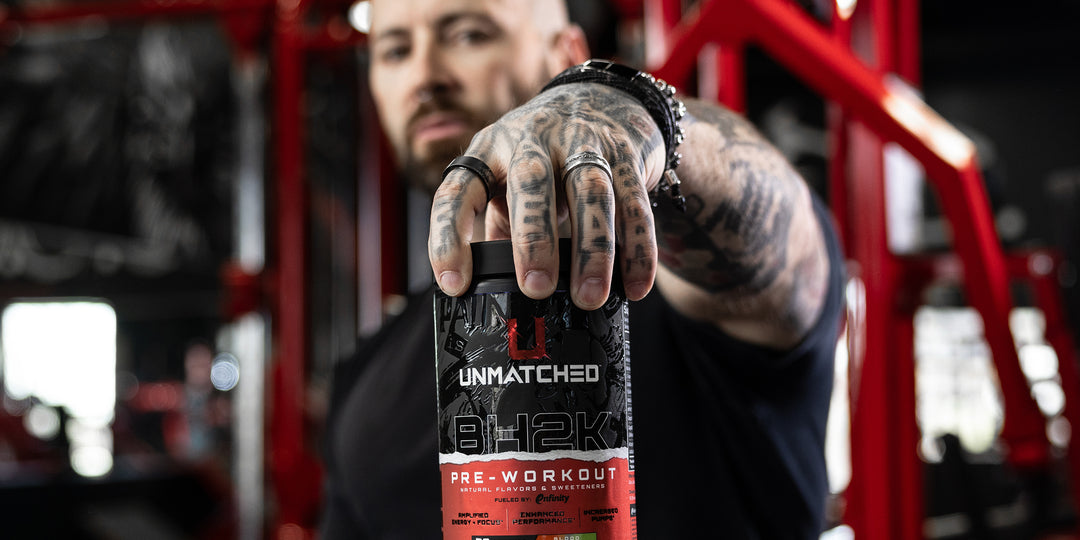Isolate Full Writeup
Introducing our premium Grass Fed Whey Protein Isolate, meticulously crafted with your health and fitness goals in mind. Sourced from grass-fed cows, our whey protein isolate offers a pure and natural protein source, free from hormones, antibiotics, and artificial additives. What sets our product apart is not only its exceptional quality but also its commitment to natural flavoring and sweetening. With 100% natural flavors and sweeteners, our whey protein isolate delivers delicious taste without compromising on purity. Whether you're aiming to build lean muscle, support recovery, or simply fuel your active lifestyle, our Grass Fed Whey Protein Isolate provides the perfect solution for your protein needs. Unlock the power of nature with every scoop and elevate your fitness journey to new heights.
Grass Fed Whey Protein Isolate
Whey protein isolate (WPI) was said above to be the king of proteins, but what does that mean? Why are proteins in general necessary, and more importantly, what are their functions as a workout supplement?
When you vigorously train or exert yourself, a process called protein degradation (the breakdown of muscle protein) begins so that the body can fuel itself. Think of this like shutting off your engine, to fuel your car (muscle protein breakdown). As this entire process plays out, the available pool of amino acids in skeletal muscle depletes, as they too, are drawn in and broken down in the natural, catabolic process during exercise training.
While this situation is quite adequate during a training session, it is precisely the opposite of what we want afterwards. At that point, we want the available pool of amino acids to increase, protein degradation to slow or stop, and muscle protein synthesis to increase. The famous, “anabolic window” is occurring during this time, so a protein powder that is rapidly digested, and that rapidly increases the available pool of amino acids, is needed to ensure that the switch between protein degradation to synthesis is as beneficial as possible. After this anabolic window passes, or before it even begins, we also want to ensure that the available pool of amino acids is high enough for your body’s constant growth cycle.
At this period, protein quality is also vital. Human skeletal muscle makes the most use out of a few amino acids, and so a quality protein needs to have an amino acid profile that is optimal for this context. An “optimal amino acid profile” contains a high amount of BCAAs, and leucine, to counteract the rate of leucine oxidation that occurs as the fractional rate of protein synthesis decreases, and the rate of muscle protein degradation increases.
We chose grass fed whey protein isolate as the only protein in Unmatched ISO for precisely these reasons. An excess amount in the available pool of amino acids (especially leucine) is called hyperaminoacidaemia, or specifically leucine, leucinaemia. After a period of intense exercise training, we want this condition to arise immediately, peak after approximately one hour, and then be sustained until another protein source can be ingested. The evidence is quite clear that whey protein isolate not only achieves this, but also may achieve it at a greater potency as compared to other protein sources. In addition to these benefits, grass fed whey also provides more omega-3s, more CLAs, less saturated fats, and fewer additives than traditional grain fed whey byproducts. These grass-fed cows are also hormone, GMO, and antibiotic free, meaning that they are consuming just one source of food leading to a more pure byproduct.
In a non-double-blind study, two groups of healthy men received either micellar casein, or whey protein isolate, after a sustained bout of exercise training. Post-training, muscle protein synthesis, essential amino acid, and leucine levels were tested and compared. The study authors conclude that, “the ingestion of isolated whey protein supports greater rates of MPS than micellar casein both at rest and after resistance exercise in healthy elderly men. This result is probably related to a greater hyperaminoacidaemia or leucinaemia with whey ingestion.”
As we said above, it is critical for a protein’s effectiveness that it contains a robust amino acid profile, one that is high in leucine. This is because leucine is both the most physiologically important amino acid, with respect to muscle mass, and the most extensively studied. Data on leucine demonstrate this amino acid plays critical roles in stimulating skeletal muscle protein synthesis, and ribosomal biogenesis and assembly (the literal building of muscle tissue), along with playing a lesser role in insulin signaling and gluconeogenic processes. As a result of these diverse roles, leucine has been demonstrated to significantly stimulate skeletal muscle protein synthesis, and attenuate protein degradation, as in the above study, by both insulin-mediated and non-insulin mediated mechanisms.
To counteract a negative intramuscular protein balance, several things need to occur – mostly, a rapid increase in the availability of amino acids. There is strong evidence to suggest that, amongst protein supplements, WPI best achieves this feat.
Coconut Oil Creamer
Coconut oil made of 100% Medium chain triglycerides has been shown to have the greatest health benefits. MCTs are made up of a chemical structure that allows them to bypass gastric uptake quickly and effectively for transport directly to the liver for oxidation and then used for energy. Their unusual chemical structure and metabolic process has resulted in MCTs being a focus for a wide range of therapeutic and exercise supplement uses.
In the context of exercise science, recent research has shown that MCTs significantly (up to 65%) increase resting energy expenditure, along with dose-dependently reducing fatty acid deposition in adipose tissue. These results suggest that MCTs are effectively increasing the body’s metabolic response to food intake.
DigeSEB®
One can easily make the argument that dietary enzymes – and digestive enzymes – are the most consistently underrated and overlooked component to a supplementation regimen. These powerful little protein structures influence or outright control a vast, complex network of bodily functions. In a fitness-specific context, digestive enzymes play a crucial role in the breaking down of dietary carbohydrates, fats, and proteins into their constitutive parts, and therefore allow your body to use them in various processes (glycogenesis, protein synthesis, etc.).
Despite their critical function, many supplement companies overlook the necessity of digestive enzymes and do not include sufficient levels (and kinds) of enzymes in their products. For a whey product, in particular – a compound that requires significant digestion and breakdown – this is madness.
As usual, we take a much more comprehensive, clinical approach than the average. In Unmatched ISO, we have included a digestive enzyme blend called DigeSEB® comprised by amylases, proteases, lactases, amylases, and cellulases, allowing for a full and complete breakdown of all these proteins components. Research suggests that whey absorption through the blood is heavily impacted by its gastric digestibility. Using DigeSEB® ensures that the protein – along with its milk and whey sugars and fats – are completely broken down.
DigeSEB® ensures that Unmatched ISO not only provides gourmet taste and clinical ingredients within the protein itself, but that your protein also increases the effectiveness of your pre- and post-workout nutrition in general.
REFERENCES
Babayan, V. K. (1987) Medium-chain triglycerides and structured lipids. Lipids 22:417-420.
Bach, A. C. & Babayan, V. K. (1982) Medium-chain triglycerides: an update. Am. J. Clin. Nutr. 36:950-962.
Scalfi, L, Coltorti, A. & Contaldo, F. (1991) Postprandial thermogenesis in lean and obese subjects after meals supplemented with medium-chain and long-chain triglycerides. Am. J. Clin. Nutr. 53:1130-1133.
Seaton, T. B., Welle, S. L, Warenko, M. K. & Campbell, R. G. (1986) Thermic effect of medium-chain and longchain triglycerides in man. Am. J. Clin. Nutr. 44:630-634.
Dulloo, A. G., Fathi, M., Mensi, N. & Girardier, L. (1996) Twenty-four-hour energy expenditure and urinary catecholamines of humans consuming low-to-moderate amounts of medium-chain triglycerides: a dose-response study in human respiratory chamber. Eur. J. Clin. Nutr. 50:152-155.
Flatt, J. P., Ravussin, E., Acheson, K. J. & Jequier, E. (1985) Effects of dietary fat on postprandial substrate oxidation and on carbohydrate and fat balances. J. Clin. Investig. 76:1019-1024.
Hill, J. O., Peters, J. C., Yang, D., Sharp, T., Kaler, M., Abumrad, N. N. & Greene, H. L. (1989) Thermogenesis in humans during overfeeding with medium-chain triglycerides. Metabolism 38:641-648
White, M. D., Papamandjaris, A. A. & Jones, P.J.H. (1999) Enhanced postprandial energy expenditure with medium-chain fatty acid feeding is attenuated after 14 d in premenopausal women. Am. J. Clin. Nutr. 69:883-889.
Astbury NM, et al. Dose-response effect of a whey protein preload on within-day energy intake in lean subjects. Br J Nutr. (2010)
Frestedt JL, et al. A whey-protein supplement increases fat loss and spares lean muscle in obese subjects: a randomized human clinical study. Nutr Metab (Lond). (2008)
Zhu K, et al. The effects of a two-year randomized, controlled trial of whey protein supplementation on bone structure, IGF-1, and urinary calcium excretion in older postmenopausal women. J Bone Miner Res. (2011)
Rennie MJ, et al. Control of the size of the human muscle mass. Annu Rev Physiol. (2004)
Tang JE, et al. Ingestion of whey hydrolysate, casein, or soy protein isolate: effects on mixed muscle protein synthesis at rest and following resistance exercise in young men. J Appl Physiol. (2009)
Dangin M, et al. The digestion rate of protein is an independent regulating factor of postprandial protein retention. Am J Physiol Endocrinol Metab. (2001)
Engelen MP, et al. Casein protein results in higher prandial and exercise induced whole body protein anabolism than whey protein in Chronic Obstructive Pulmonary Disease. Metabolism. (2012)
Pal S, Ellis V, Dhaliwal S. Effects of whey protein isolate on body composition, lipids, insulin and glucose in overweight and obese individuals. Br J Nutr. (2010)
Haraguchi FK, et al. Evaluation of biological and biochemical quality of whey protein. J Med Food. (2010)
de Aguilar-Nascimento JE, Prado Silveira BR, Dock-Nascimento DB. Early enteral nutrition with whey protein or casein in elderly patients with acute ischemic stroke: a double-blind randomized trial. Nutrition. (2011)
Candow DG, et al. Effect of whey and soy protein supplementation combined with resistance training in young adults. Int J Sport Nutr Exerc Metab. (2006)
Ianiro, G., Pecere, S., Giorgio, V., Gasbarrini, A., & Cammarota, G. (2016). Digestive Enzyme Supplementation in Gastrointestinal Diseases. Current drug metabolism, 17(2), 187–193. https://doi.org/10.2174/138920021702160114150137
Roxas M. (2008). The role of enzyme supplementation in digestive disorders. Alternative medicine review : a journal of clinical therapeutic, 13(4), 307–314.


